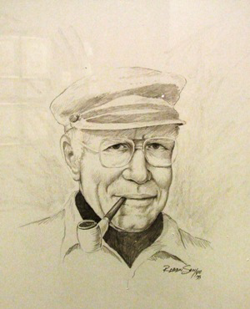News
WILBUR NELSON – DELTA CHI LEADER AND CHAIRMAN, DEPARTMENT OF AERONAUTICAL ENGINERING

Article by Keith Hellems, M.D. hellems.xraydoc@verizon.net
The Michigan Delta Chi fraternity was formed in 1892 as the 2nd in the national Delta Chi. It moved in the 1920’s from being a legal fraternity to a social fraternity. In 1934 during the depression, it went off campus. The last president in 1934 was Wilbur C. Nelson ’35. Wilbur who was from Flint, MI did his undergraduate work in aeronautical engineering at The University of Michigan and graduate work both at the California Institute of Technology and The University of Michigan. During the period from 1935 to 1940 Professor Nelson worked at the Lockheed Aircraft Corporation in Burbank, California, the Civil Aeronautics Administration in Washington, D.C., and Engineering Projects, Inc., Dayton, Ohio. He started his teaching career in 1940 at Iowa State College as an assistant professor of aeronautical engineering. In 1942 he was promoted to professor and chairman of the department. He joined the Department of Aeronautical Engineering at The University of Michigan as a professor in 1946 and served as chairman of the department (now called Aerospace Engineering) from 1953-68. It was under Professor Nelson’s leadership that the department experienced its greatest growth.
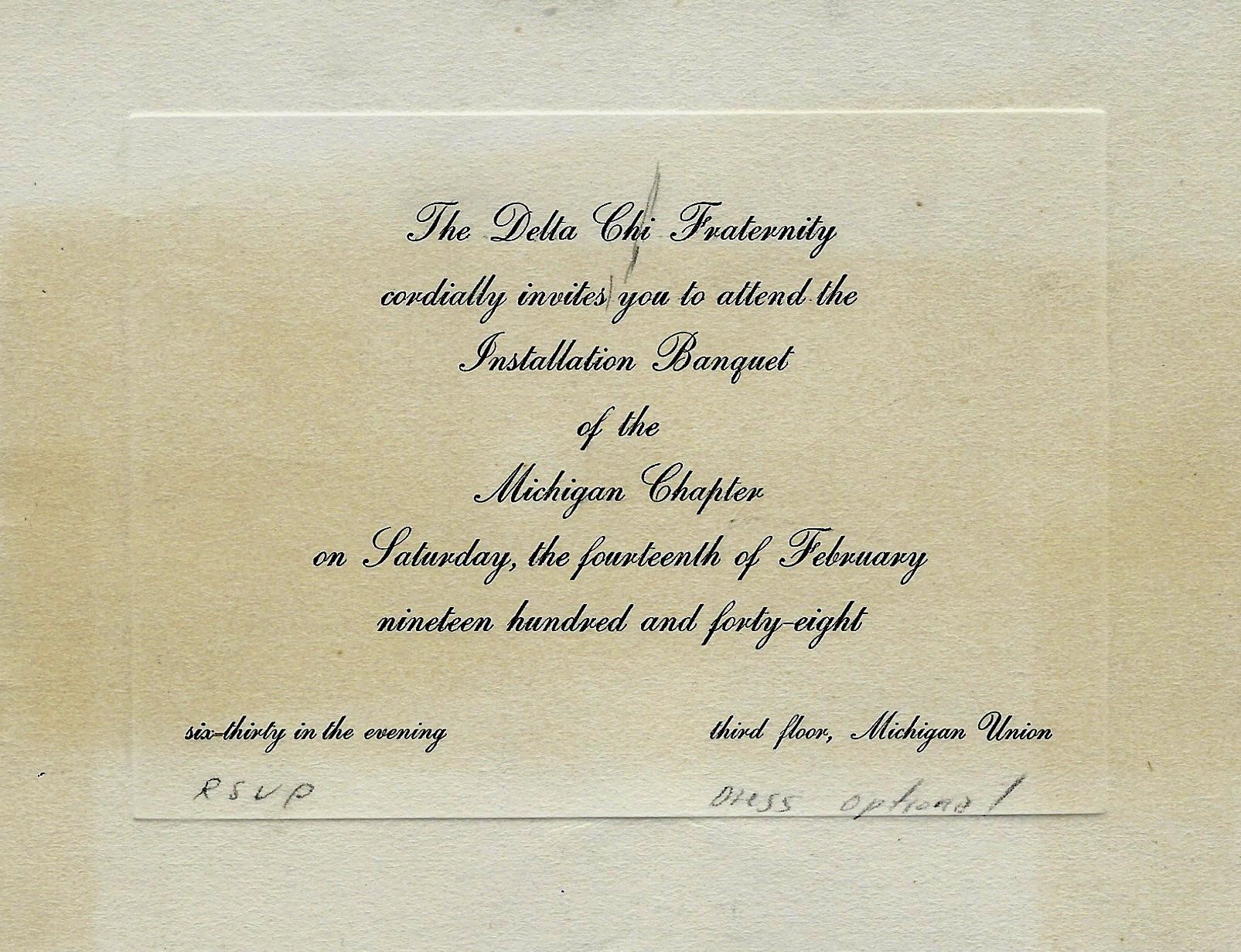
However, the most important service that Wilbur did for Delta Chi at Michigan was to restore the Chapter on campus in 1948. He, along with the help of Henry deKoning, a local Ann Arbor builder and Joe Lacchia who was BB at the Michigan State University DX chapter formed a group that found and purchased the old Chapter House at 1705 Hill Street property. This was the second coming of Delta Chi to the University of Michigan.
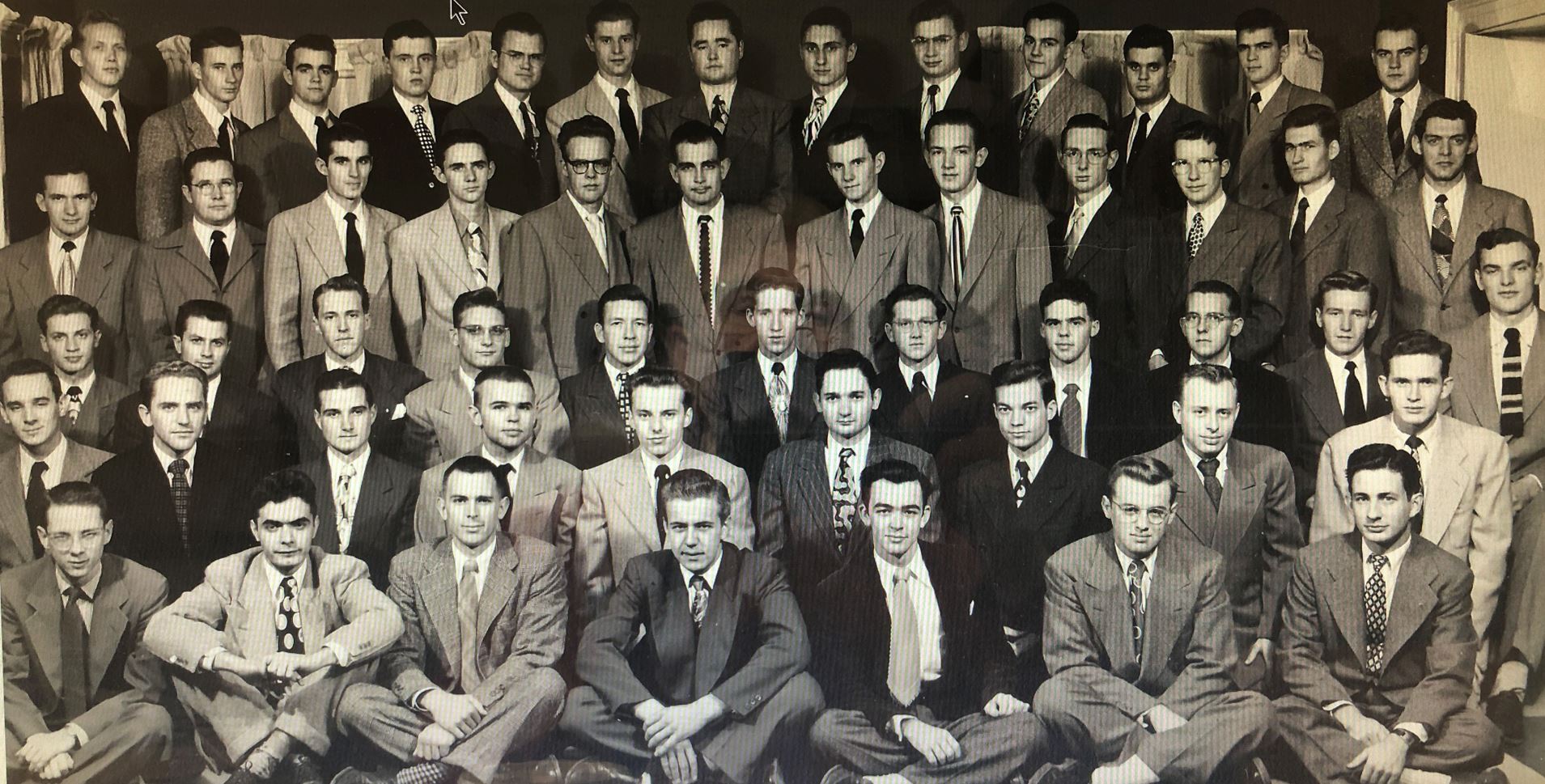
His early influence on the chapter was reflected by a good number of members who took training in the Aeronautical Department. These included Henry Winchester ’51, Henry Donald ’58, Paul Wolcott ’58, Fred Jackson ’59, Jim McComb ’61, Lee Brandt ’64, Ed Worth ’65, Ken Majchrzak,’66 and Carl Rohrbach,’67. He continued to support the chapter through the years. He was the BB for many years and in 1960 gave a talk on Founder’s Day speaking on the history of DX and also the aims and purposes of the fraternity.
In 1977 he retired from the department. The following are excerpts from his remarkable career where the Regents saluted this distinguished educator by naming him Professor Emeritus of Aerospace Engineering. Professor Nelson’s work in guided missiles and astronauts started in World War II during the time he was on leave at The John Hopkins Applied Physics Laboratory as a project supervisor. In 1946-47 he served as project engineer in charge of the first U.S. anti-missile defense program, Project WIZARD, at The University of Michigan. He has been a member of the NATO Advisory Group for Aeronautical Research and Development since 1953, and has served as advisor to the Army, Air Force, and National Aeronautics and Space Administration. He has also been a consultant to many companies and other governmental agencies. He was said to be proud on being on the inaugural Concorde flight from Dulles to Paris and of having flown at Mach 2 in an F-104.

Six of the Apollo astronauts were graduates of Professor Nelson’s department and he had most of them as students. In recent years he was especially well recognized for his outstanding senior design course on space systems.
In a 1966 article, it was noted that the U of M Aerospace department certainly had a major impact on the American space program. Two early missions flew all-Michigan crews: Gemini 4 (Lt. Col. James A. McDivitt and Lt. Col. Edward H. White II) and Apollo 15 (Air Force Capt. Alfred M. Worden, Air Force Maj. James B. Irwin). In addition, Maj. David Scott was a member of the Gemini 8 team.
On the Gemini 4 mission Ed White became the first American to “walk” in space. He was scheduled to fly again in Apollo 1, along with Gus Grissom and Roger Chaffee, but died with them on January 27, 1967, in the terrible fire on the pad while Apollo I was being tested for next month’s launch.
Michigan’s next graduate in space was Jack Lousma (BSE, 1959), pilot of Skylab 2, who spent two months in space in 1973. He went on to fly the Space Shuttle Columbia on its third flight in March 1982.
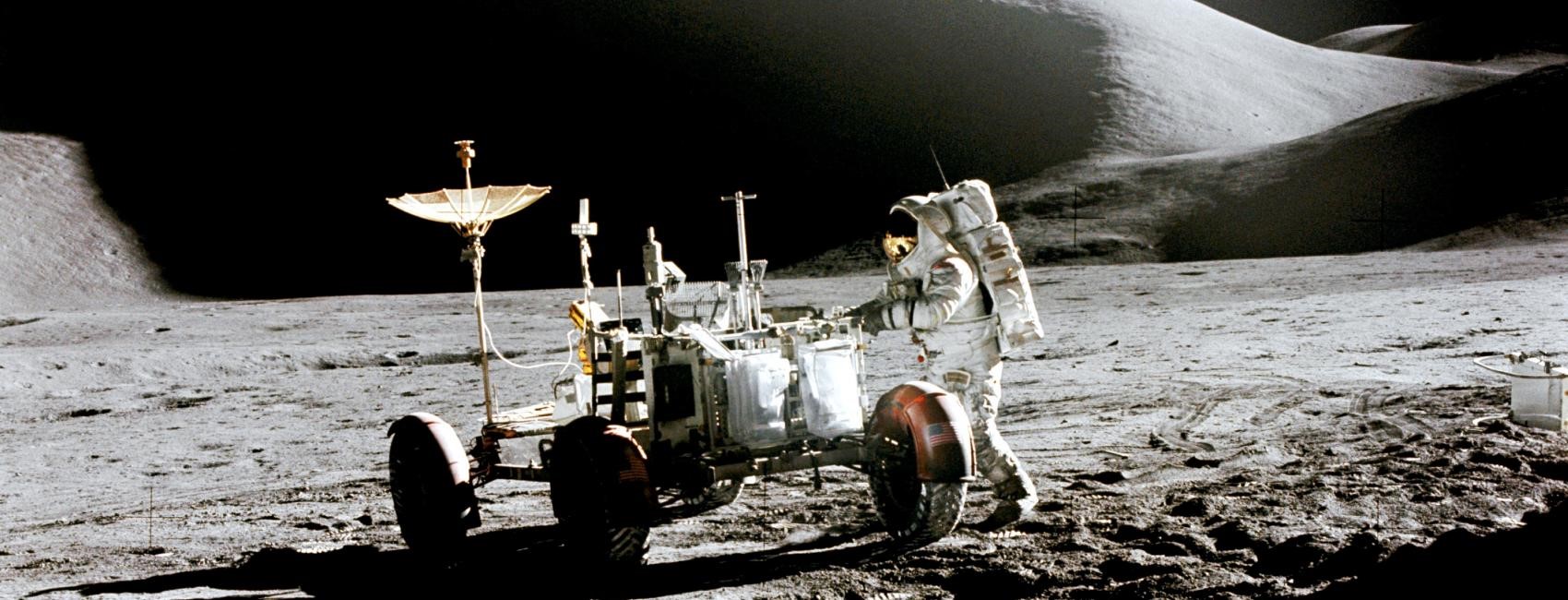
Jim McComb ’61 recalls: “I attended the University of Michigan from the fall of 1957 through the spring of 1963. My BS Degree is in Aeronautical Engineering while my MS degree is in Aeronautical and Astronautical Engineering. A department name change occurred somewhere in that time period. Glad to see it was later changed to Aerospace Engineering.
My first semester at Michigan, I took an airplane performance course taught from the book “Airplane Performance Stability and Control” by Perkins & Hage. It was a mandatory course (2 credits) for newly enrolled want-a-be Aeronautical Engineers and it was taught by Wilber C Nelson. The course focused on performance of propeller piston engine powered aircraft. He taught very basic aspects of airplane performance and stressed that once employed in industry, one needed to be proficient in making quick accurate calculations.
In my mind, a major contribution Wilber C. Nelson made to aeronautical engineering was the book he wrote and got published in 1944. The book is entitled “Airplane Propeller Principals”. It’s a classic and a book I referred to countless times during my 49-year career.”
Ed Worth ’65 recalls, “I had Prof Nelson for the Intro to Aerodynamics, the 1st Aero course for first semester sophomores, and Aerospace Systems Design, my last Aero course. The design course required the entire class to organize themselves into small teams with each team given responsibility for a portion of the project, as in industry. Our topic was to design a system that could make a survivable landing on Mars. At this time, the Apollo program is going full speed, flybys of Mars and Venus had provided a wealth of information, but only impact landings on the moon had been successful. Thus, we learned to search out the latest information and extend that technology to solve new problems. At the end of the course, the class presented the design review of the project to local Aerospace consulting company. In 1975, 10 years later, Viking 1 sent the first image from the Mars surface.”
I had Lee Brandt ’64 review the article and he replied, “Jack Lousma is the only one not credited with his rank. He was a Lt. Col. in the Marines. Also, he was not a part of the Apollo 15 crew. He was part of the Skylab II (predecessor to the International Space Station) crew and performed a spacewalk, and he was the Space Shuttle pilot for its third (and final test flight.) I may be overly sensitive about his information because he is a close cousin and the main reason I attended UM.” The two pictures below hang in Lee’s house.
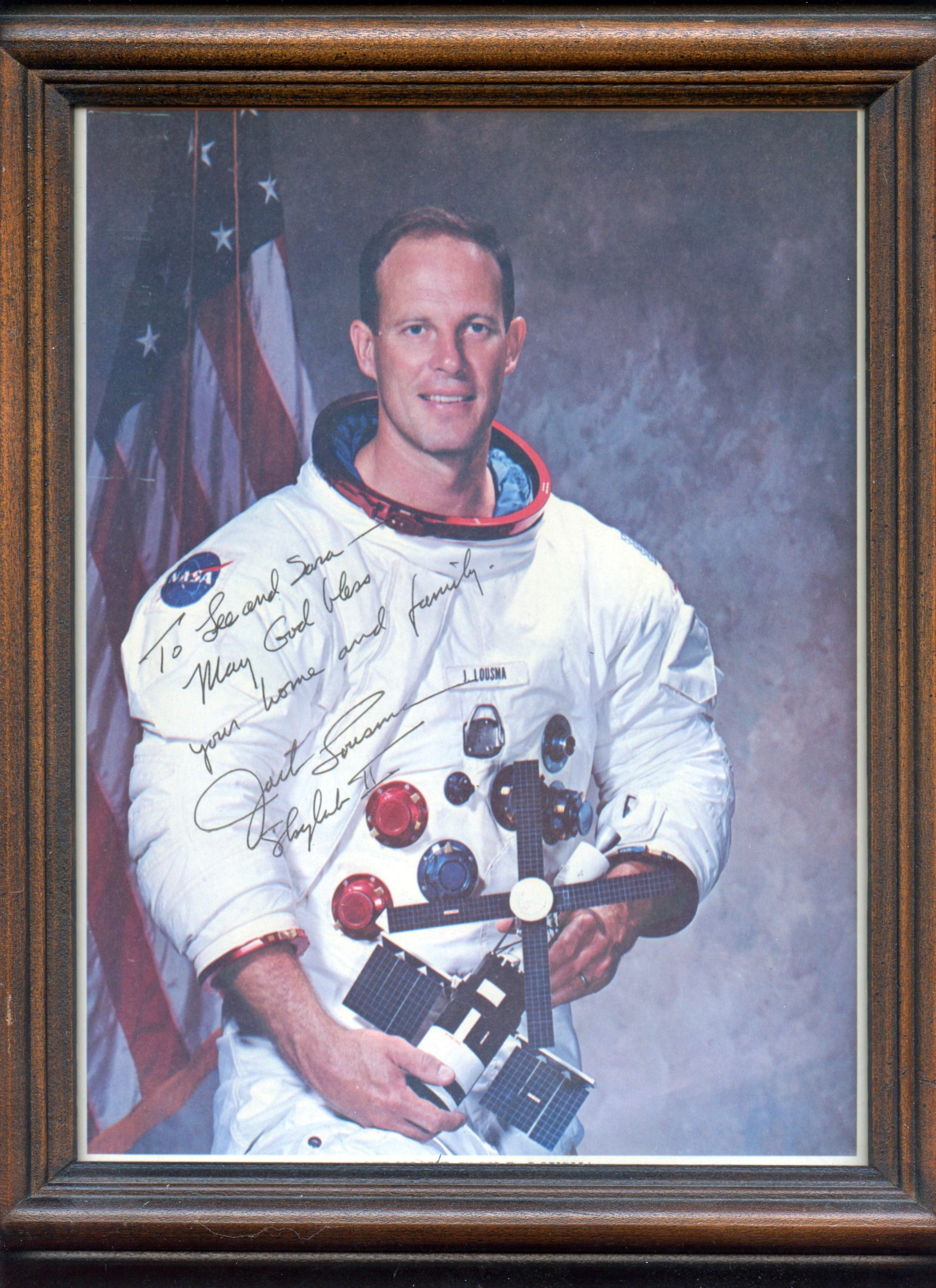
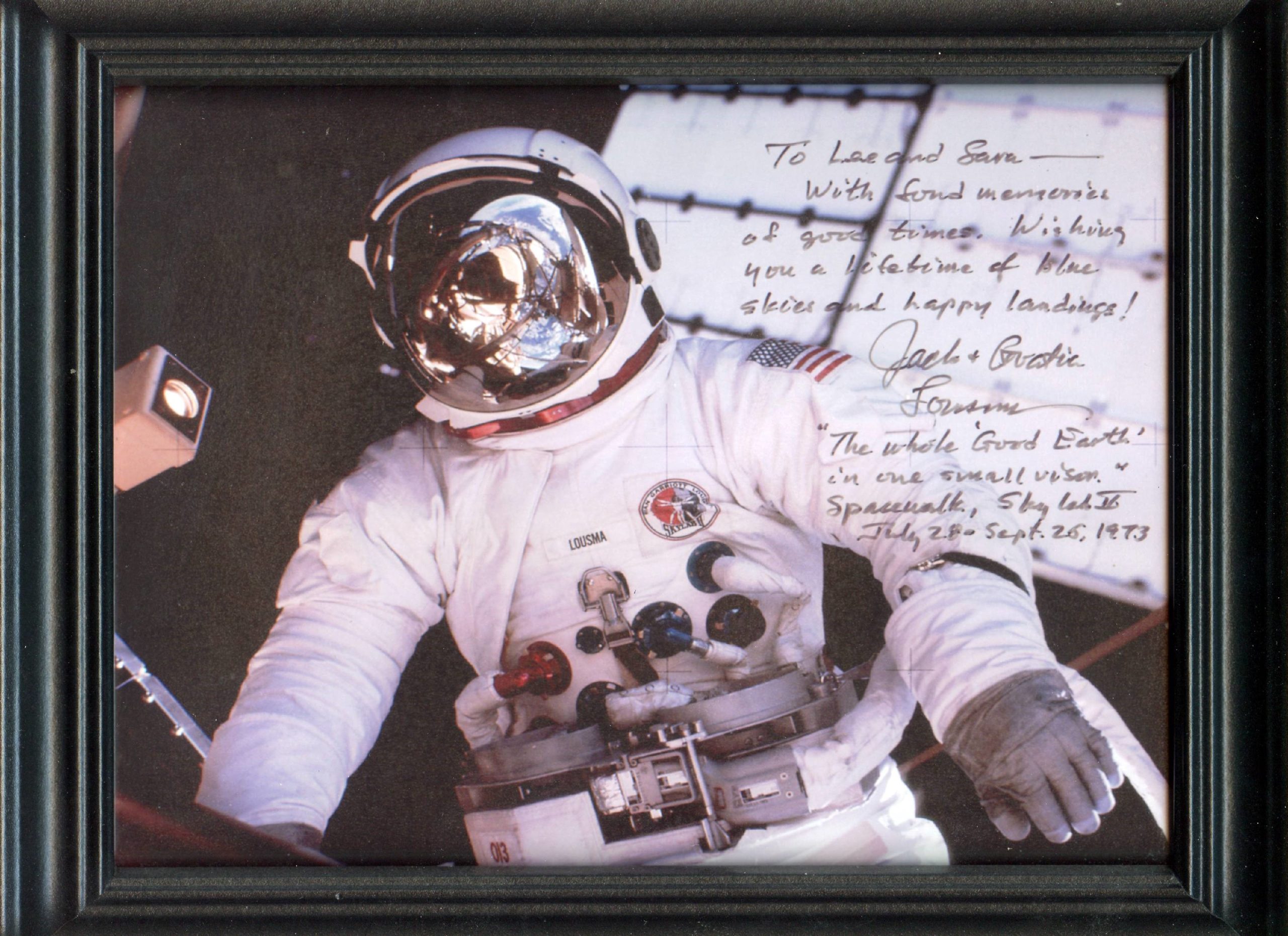
For those seeking more detail about the Gemini and Apollo programs, here are some links you might be interested in. Comments and/or elaborations from those reading the article are always appreciated.
Gemini 4 mission: https://nssdc.gsfc.nasa.gov/nmc/spacecraft/display.action?id=1965-043A
Gem 4 – 50 year follow-up: https://www.nasa.gov/feature/gemini-iv-learning-to-walk-in-space
Gemini 8 mission: https://www.nasa.gov/feature/geminis-first-docking-turns-to-wild-ride-in-orbit
Gem 8 – 55 year follow-up; https://www.nasa.gov/feature/55-years-ago-gemini-viii-the-first-docking-in-space
Apollo 15 mission: https://www.nasa.gov/mission_pages/apollo/missions/apollo15.html
Apollo 15 – 50 year a follow up article in 2021 talking about the 3 astronauts in article: https://www.nasa.gov/feature/50-years-ago-apollo-15-astronauts-post-mission-activities

